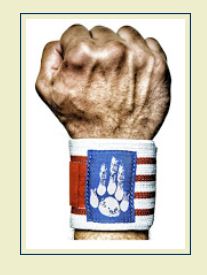[This guest post was authored by John L. Strand, Shareholder in the Trademark and Litigation Groups at Wolf Greenfield]. Applicant Manimal, LLC sought to register the mark MANIMAL for a wide variety of clothing, including "children's clothing." Opposers Garan Incorporated and Garan Services Corp. are the makers of children's clothing and the owners of several registrations containing the mark GARANIMAL, but the Board focused its Section 2(d) analysis only on Registration No. 0954125 for the block mark GARANIMAL for "children's shirts and pants." After going through the DuPont factors, the Board ultimately found that the MANIMAL mark was not likely to cause confusion with GARANIMAL. In an interesting discussion, the Board also found that applicant did not abandon the mark MANIMAL when it entered into a consent agreement allowing another company to use the mark MANIMALS for a variety of clothing items, including children's clothing. Garan Incorporated v. Manimal, LLC, Opposition No. 91232774 (Feb. 13, 2020) (not precedential) (Opinion by Judge Marc A. Bergsman).

Section 2(d) Likelihood of Confusion Analysis: The Board dutifully analyzed each of the DuPont factors in concluding there was not likely to be confusion, but the discussions of the similarity of the goods, the strength of Opposers' mark, and the similarity of the marks stood out.
Regarding the similarity of the goods, the applicant sells mostly athletic gear for adults, particularly wrist-wraps such as that shown above from applicant's website. As Opposers sell children's clothing, applicant tried to argue that the goods are "not related." But as the Board has repeatedly stated, it "must consider the goods as the parties describe them in the application and registrations at issue." Here, even though applicant may focus on adult clothing, it is seeking a registration including "children's clothing," including pants and shirts, which directly overlaps with Opposers' listed goods.
As to the strength of the GARANIMAL mark, ultimately the Board found the marks to be "commercially strong, but not famous." (This finding also ended Opposers' Section 45(c) dilution claim.) The Board started its analysis with the inherent strength of the GRANIMAL mark, finding it to be "inherently strong" as a coined, fanciful term. The Board then dismissed the eight clothing registrations applicant identified with either "animals" or "-imals" as suffixes, finding, as the Board often will do, that eight registrations were a "far cry" from the "quantum of evidence of third-party use and third-party registrations that was held to be significant in both Jack Wolfskin ... and Juice Generation ...."
Opposers presented several seemingly strong pieces of evidence concerning the commercial strength of its marks, including use of the mark since 1972, "substantial" sales and advertising expenditures, and a reference to the GARANIMAL clothing in a third-party book. Despite this evidence, the Board found the Opposers did not "clearly" establish fame given, in part, that it provided no market share information or distribution information about the third-party book.
Finally, although the Board did not rely on the eight other "-imals" registrations when analyzing the strength of the GARANIMAL mark, it did rely on these other marks to conclude, "Opposers must believe that various 'animal' or 'imals' suffix marks can be used and registered side by side without causing confusion provided there are minimal differences between the marks." This admission, along with other evidence not discussed here, led the Board to conclude "that the marks are not similar in appearance, sound, connotation or commercial impression."
Balancing the DuPont factors, the Board ultimately found "the dissimilarity of the parties' marks outweighs the other applicable DuPont factors," and concluded "Applicant's mark MANIMAL for men's, women's and children's clothing listed in the description of goods is not likely to cause confusion with Opposers' GARANIMAL marks for clothing."
Abandonment: During prosecution of the application at issue, the Examining Attorney cited another application for the mark MANIMALS that covered a wide variety of clothing, including infant and toddler clothing, as a potential Section 2(d) bar. Applicant traversed this potential bar by submitting a consent agreement with other application's owner (the other application eventually did issue as a registration). In that agreement, the other applicant agreed to amend it description of goods to read "shirts featuring animals with humanoid characteristics," and gave consent for this applicant to use and register MANIMAL.
Opposers argued that the consent agreement was merely a "naked consent" as this applicant had no right or ability to control the nature of the other party's goods. Analyzing the portion of Section 45 that deals with abandonment, the Board observed that even if there was a "naked consent," the Opposers still had to show that the agreement "caused Applicant's mark to lose its significance as a trademark." As Opposers put forth no such evidence––there was not even any evidence the third-party was still using MANIMALS––and applicant introduced evidence showing continuous use of its MANIMAL mark, the Board dismissed Opposers' abandonment claim.
With that, the Board dismissed the opposition in its entirety.
TTABlog comment: Seems like the Board ran an end-run around Jack Wolfskin and Juice Generation .
The content of this article is intended to provide a general guide to the subject matter. Specialist advice should be sought about your specific circumstances.
